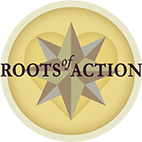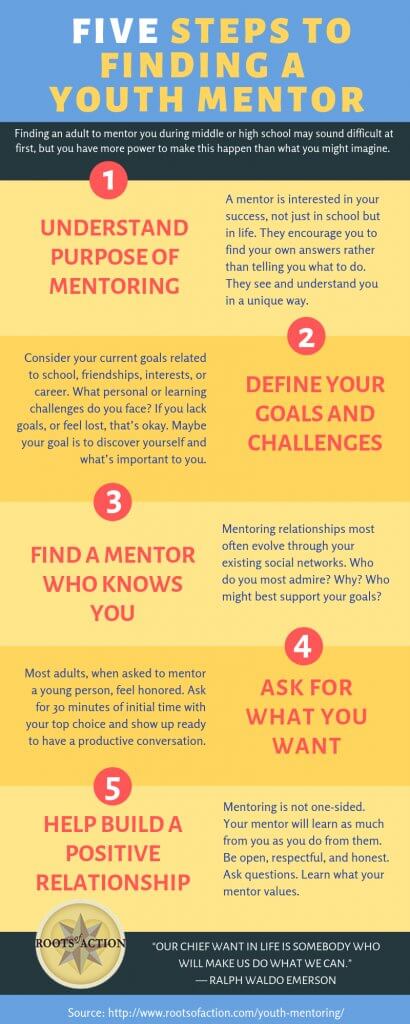
Like many adults, I can recall the profound influence that youth mentoring has had on my life. Not only did my mentor, a high school teacher, support me through my challenging teen years, but I have felt her positive influence for a lifetime.
Why is youth mentoring so important? How do teenagers find the right mentors?
In a new study involving more than 70 youth mentoring programs and more than 25,000 young people, researchers confirmed what many other smaller studies have found—that mentoring has a significant effect on positive youth development (Raposa, et. al. 2019). This study, a meta-analysis, combined the results from many youth mentoring studies conducted between 1975 and 2017 to learn more about the outcomes and conditions under which mentoring is most effective.
The Benefits of Youth Mentoring
The following is a synopsis of what the Raposa study uncovered from the research on youth mentoring and how it supports the development of three interconnected processes during the teen years: 1) social-emotional learning, 2) cognitive learning, and 3) identity formation.
Research shows that youth mentoring by non-parent adults:
- Models positive social skills and facilitates interpersonal connections beyond family.
- Helps young people interpret and manage life challenges, including relationships with peers and parents.
- Facilitates meaningful conversations that boost cognitive skills and provides perspective.
- Strengthens self-regulation, one’s ability to manage emotions and impulses—to think before acting.
- Promotes identity development, a key task of adolescence, through modeling core qualities that contribute to human thriving, like empathy, curiosity, resourcefulness, and resilience.
- Opens doors to new ways of thinking, resources, and opportunities.
- Fosters self-efficacy—a belief in oneself.
Many formal youth mentoring programs focus their efforts on working with young people with risk factors, like poverty or neighborhood violence. The results of these programs benefit youth in many ways, including those listed above. However, recent large-scale research shows that the same benefits exist from youth mentoring regardless of risk factors, income, or ethnicity.
In my book, Tomorrow’s Change Maker’s: Reclaiming the Power of Citizenship for a New Generation, I explored the power of youth mentoring and its impact on thriving and civic engagement. My research study included youth who grew up in a wide range of circumstances, from poverty to affluence. Non-parent mentorship was a common thread in the stories of successful young people.
The teens in my study were fortunate to have found adult mentors informally—usually through their involvement in after-school activities and community service. Their relationship grew naturally because the adult supported and encouraged the teen in a variety of ways. They cared for and respected each other.
Non-parenting mentoring helped teens develop the core internal strengths that are part of The Compass Advantage, a framework of positive youth development that evolved from my research. These core strengths are empathy, curiosity, sociability, resilience, self-awareness, integrity, resourcefulness, and creativity.
Young people agree that mentoring relationships are most successful when mentors don’t see themselves merely as teachers, advisors, and role models, and instead considered themselves listeners, encouragers, supporters, and co-learners.
Being a youth mentor is different from being a role model, although good mentors are usually both. Role models serve as inspiration to children. They are not necessarily available to support them and often do not live close by. Learn about the five qualities of role models that matter most to youth.
Youth mentors, on the other hand, usually know (or get to know) the young person well, sees them regularly, and encourages them through a variety of life challenges. Learn how mentors influence the development of the core compass abilities that last a lifetime.
Formal youth mentoring programs exist only for subsets of teens. More informal mentoring relationships, like the ones developed by the teens in my study, do not occur for most youth. Yet, all teens benefit from non-parent mentors during adolescence. For this reason, teens should initiate their own mentoring relationships, like many young professionals have learned to do.
The next section speaks directly to teens, providing information from research that young people can use to foster a meaningful mentoring relationship.
Five Steps to Finding a Youth Mentor
Finding an adult to mentor you during middle or high school may sound difficult at first, but you have more power to make this happen than what you might imagine. Often that power is as simple as knowing who and how to ask.
1. Understand the Purpose of Youth Mentoring
A youth mentor is interested in your success, not just in school, but in life. They encourage you to find your own answers rather than telling you what to do. They listen intently. They are advocates for your well-being. They see, hear, and understand you in a way that others may not. In turn, this helps you learn about and believe in yourself!
2. Define Your Goals and Challenges
Consider your current goals related to school, friendships, interests, or career. What personal or learning challenges do you face? If you lack goals or feel lost, that’s okay. Maybe your goal is to discover yourself and what’s important to you. Youth mentoring can help.
3. Find a Mentor Who Knows You
Youth mentoring relationships most often evolve through your existing social networks. Make a list of adults who know and like you. Consider teachers, counselors, tutors, social service workers, program leaders, pastors, neighbors, or anyone who has shown kindness and respect toward you. Who do you most admire? Why? Who might best support your goals? Decide on your top choices.
4. Ask for What You Want
Most adults, when asked to mentor a young person, feel honored. Ask for 30 minutes of initial time with your top choice and show up ready to have a productive conversation. Explain why you believe a mentor would benefit you and why you are asking them to play that role. Talk about your current goals and challenges. Ask if they would be willing to meet every two weeks to discuss, encourage, and support your goals. If they don’t have the time or don’t feel they are the right person, don’t be discouraged. Repeat the process with someone else.
5. Help Build a Positive Relationship
Youth mentoring is not one-sided. Your mentor will learn as much from you as you do from them. Be open, respectful, and honest. Ask questions. Learn how your mentor thinks and what he/she values. Exchange perspectives without judgment. Allow your relationship to evolve. If it doesn’t work, say so and then redefine or end your formal mentoring relationship.
Infographic on Youth Mentoring
If you are a parent, teacher, or other caring adult in a young person’s life, you can play a role in introducing teens to the importance of finding a mentor during these formative years. You can also make connections and introductions to adults that might play a mentoring role for a teen. Please feel free to share this infographic and refer teens to the research on youth mentoring and the more detailed steps above on how to initiate a relationship with a supportive adult.
References
Goldner, L., & Mayseless, O. (2008). The Quality of Mentoring Relationships and Mentoring Success. Journal of Youth and Adolescence, 38(10), 1339. doi:10.1007/s10964-008-9345-0
Raposa, E. B., Rhodes, J., Stams, G. J. J. M., Card, N., Burton, S., Schwartz, S., . . . Hussain, S. (2019). The Effects of Youth Mentoring Programs: A Meta-analysis of Outcome Studies. Journal of Youth and Adolescence, 48(3), 423-443. doi:10.1007/s10964-019-00982-8
Spencer, R., Gowdy, G., Drew, A. L., & Rhodes, J. E. (2019). “Who Knows Me the Best and Can Encourage Me the Most?”: Matching and Early Relationship Development in Youth-Initiated Mentoring Relationships with System-Involved Youth. Journal of Adolescent Research, 34(1), 3–29. https://doi.org/10.1177/0743558418755686
Published: June 19, 2019




